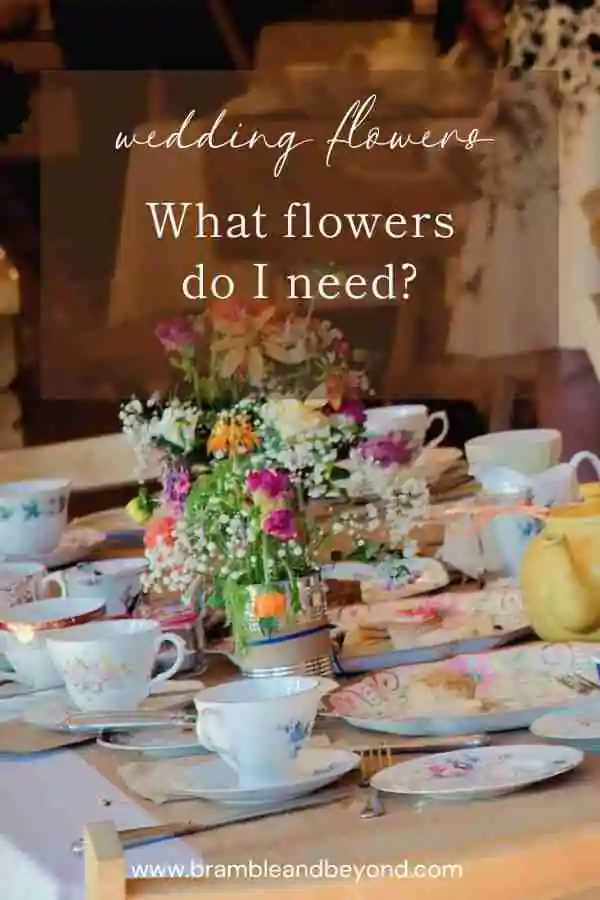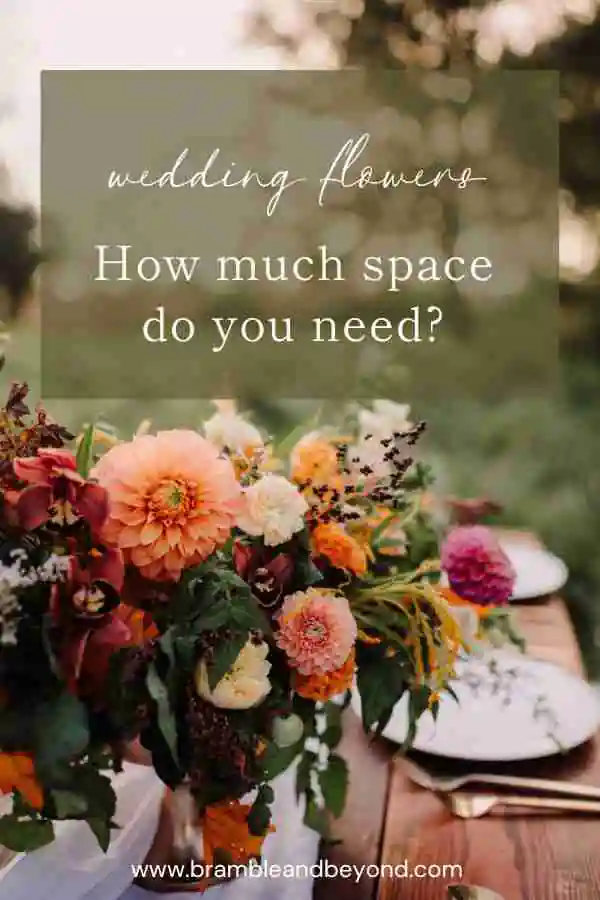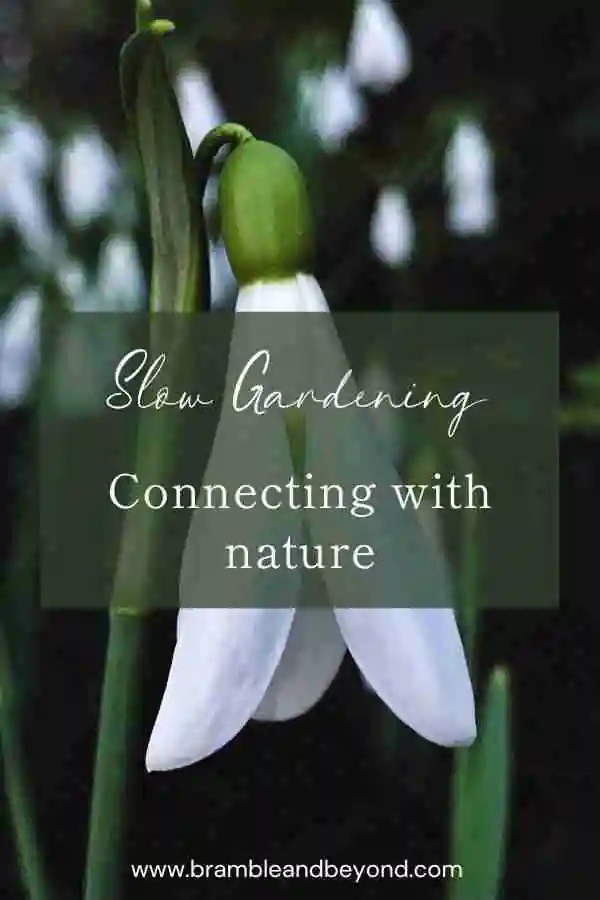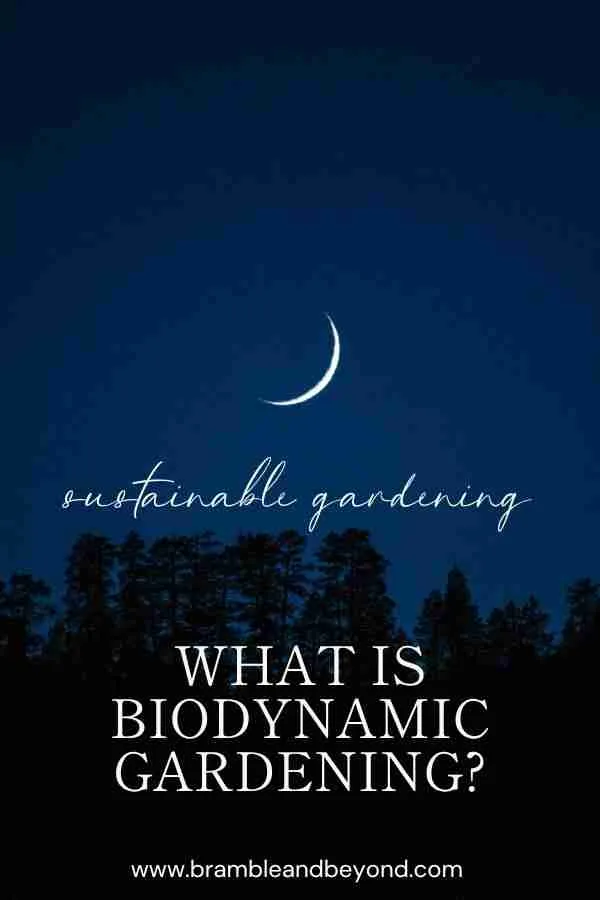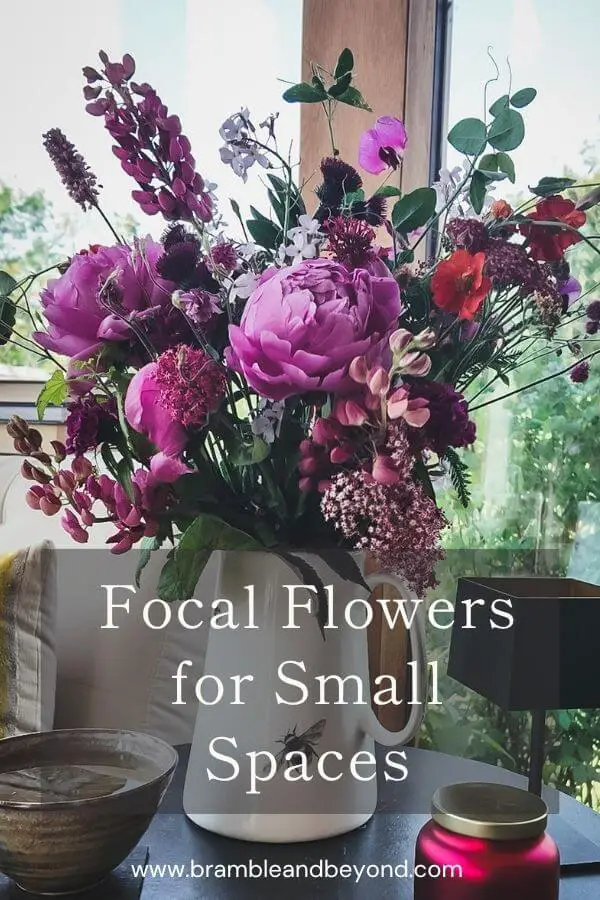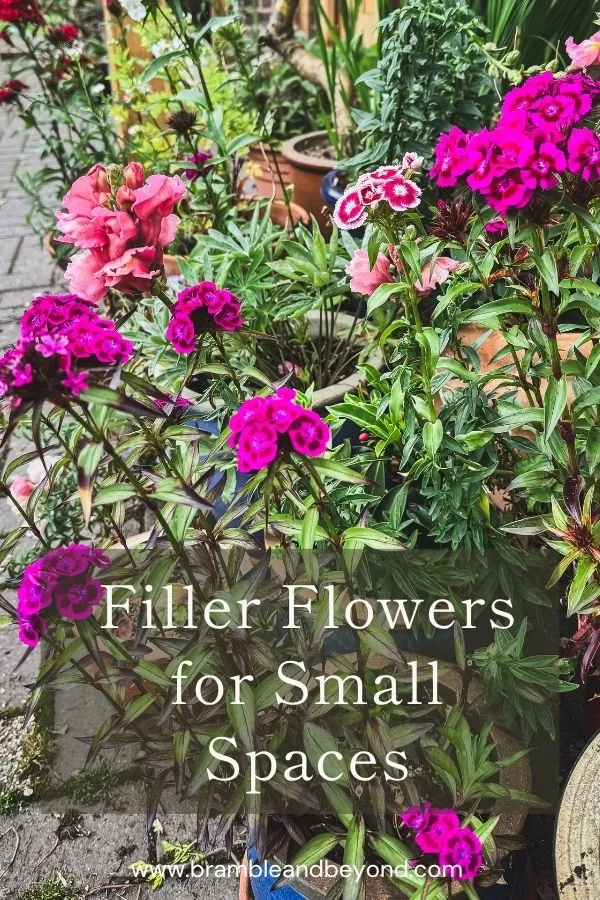Disclosure: This post may contain affiliate links, meaning I get commission if you decide to make a purchase through my links, at no cost to you. Please read my Affiliate Disclosure for more information.
Planning the perfect wedding day is quite a task. And let’s be honest, one of the most thrilling decisions you’ll make is choosing the floral arrangements, in my opinion anyway. Flowers have this magical power to bring the atmosphere of the ceremony and reception to life, don’t they? But here’s the thing, if you’re planning to grow your own DIY bridal flowers, you’ve got an extra decision to make – how many and what wedding flowers do I need to grow for the wedding reception?
On average, most wedding receptions call for around 350-600 stems of flowers, depending on the look you’re going for. That number can also vary based on factors like the size of the venue, the number of guests, and the number of arrangements you have in mind. Trust me, there’s a lot to consider – bouquets for the bridal party, boutonnieres for the dapper men, and centrepieces that’ll make your tables and altar shine like a dream!
So, my lovely, growing your own wedding flowers can actually be a fantastic way to save some money and create a truly unique and memorable day. If you are just starting to think about DIY bridal flowers, take a look at this article which outlines all the benefits and challenges of diving into the world of growing your own wedding flowers. And if you are still wondering if it is cheaper to grow your own wedding flowers, you’ll find some helpful insights there. But whether you choose to grow or order your flowers, knowing just how many flowers you need to create your desired look is absolutely essential.
So, let’s dive into the wonderful world of growing your own wedding flowers and explore everything you need to think about when determining the number of flowers that’ll make your big day unforgettable.
Estimate the number of guests
Picture this: imagine yourself standing there, surrounded by your loved ones, ready to say those magical words. But before you get lost in the moment, it’s a good idea to estimate the number of guests who will be sharing this extraordinary day with you. Why? Well, because it will help you choose the perfect venue size, which, in turn, affects the number of flowers you will need.
If you’re going for a more intimate ceremony, you will naturally require fewer flowers compared to hosting the grand event of the century. And hey, for a grand celebration, why not consider using a variety of flowers to create a lush and breathtaking look? I suggest using large foliage leaves and big stems to make a big impact while using fewer stems.
Oh, and let’s not forget about the fabulous bridal party. The number of people in the bridal party will indicate how many bouquets, corsages, and buttonholes (boutonnieres) you will need, if you decide to make these yourself.
Determine the size of the wedding venue
When it comes to determining how many flowers you need, venue size is a biggie along with the type of arrangements you’d like.
So let’s imagine your ceremony – you might want flowers on the altar or along the aisle, creating a glorious path to love. You could go for one grand arrangement or sprinkle multiple smaller ones along the way. It’s your day, after all – why not have a bit of both?
And when it’s time for the reception, ah, the magic continues. The number of floral arrangements you’ll need will depend on the size of your tables and the design you’re dreaming of.
Now, centrepieces usually steal the show, but don’t forget about adding smaller arrangements to the buffet, cake table, and other charming areas. Oh, the possibilities are endless!
You might even consider decorations like garlands, wreaths, and delicate flower petals. Just remember, the more you have, the more flowers you’ll need to bring your vision to life.
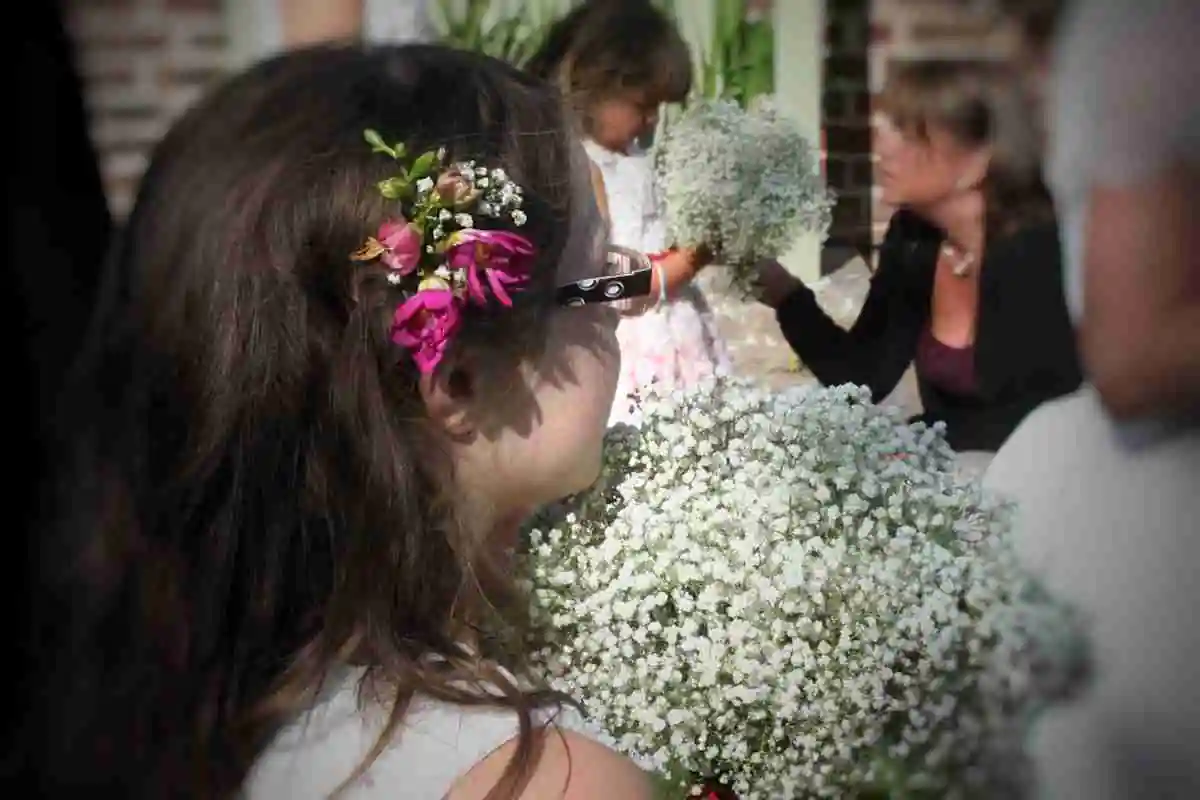
Choose flowers for the best yield
Now, let’s have a chat about flowers – because, wow, they’re the real stars of the show!
Of course, the season or month of your wedding will determine which blooms are all set to shine. But, different flowers have different ways of blooming too.
Some are like solo performers, with one stunning flower per plant (think sunflowers and tulips). These are known as single stem varieties.
Others are more like team players, where you can cut multiple stems at once from a single plant. But here’s the thing – the number of flowers available at any given time may vary.
First, there are medium producer varieties such as ammi majus, antirrhinum, larkspur. These medium producers will keep blooming for 4-6 weeks before the quality starts to decline and the plant is ready to be removed. These are usually hardy annuals. So you’ll need to time your seed sowing to match your wedding date when they are at their best.
And then there are the cut-and-come-again flowers. These only need to be sown once and will keep producing stems for cutting without a decline in quality as long as you remove the old flowers to prevent them from producing seeds. These tend to be tender annuals such as cosmos, zinnias, nicotiana, scabiosa, and dahlias – basically, the more you pick, the more they bloom. But remember, even though you can harvest continuously throughout the season, there will only be a limited number of blooms ready at any given time. So time your deadheading to coincide with a new growth of flowers in time for your big day.
So when you need a specific number of stems ready for one specific day, you’ll get more value from plants that produce more flowering stems per plant. You’ll need to grow fewer plants and therefore require less space. But you need to time it carefully with your planning or maintenance to ensure they are ready at the right time.
Consider the floral arrangements you want
Let’s talk floral arrangements.
Now, if you’re the kind of person who can’t resist adding a touch of magic to every corner, well, you’ll need more flowers to bring those dreamy arrangements to life. But, if you’re keeping things minimal, you won’t need as many flowering stems.
If you’re planning both a ceremony and a reception, you might be wondering – should you double up the arrangements or move them from one location to another? Just a little something to ponder.
And don’t forget to consider the types of centrepieces you’ll have. Some designs call for more flowers than others, so be sure to factor that in.
Oh, and let’s not forget any special arrangements or bouquets you might need for the bridal party or other VIP guests.
Whatever floral arrangements you would like, each one will need their own set of flowers and as such will add to the number of plants you need to grow.
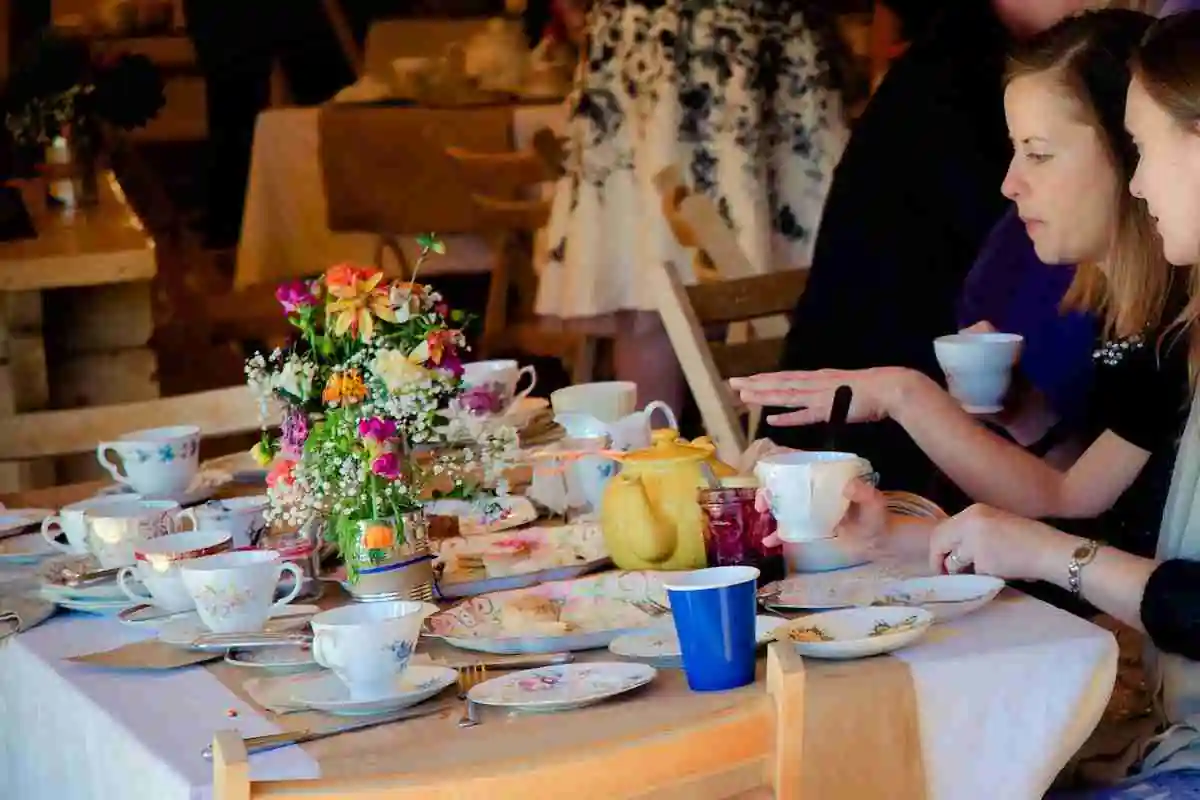
Estimate the number of arrangements
Alright, you’ve thought about want you would like to have as floral arrangements, now let’s get down to business.
To give you a better idea about the number of flowers that may be involved in your wedding, I have provided an idea of how I calculate wedding flowers.
The example is based around a hundred guests sitting at ten tables, with both sets of parents, three bridesmaids, a best man and one usher (groomsman), with the following arrangements:
- a bride’s bouquet
- three bridesmaids’ posies
- five buttonholes
- one large arrangement for the church
- ten table-centre posies
- three large, jug-sized arrangements for the reception.
If you bear this in mind when you think about how many arrangements you’d like, you can scale the quantities given here up or down according to your requirements.
What wedding flowers do I need for a wedding reception?
I’m about to spill the secret to calculating your flower needs – it’s a process called stem counting.
This nifty technique helps you figure out approximately how many stems you’ll need for different types of arrangements.
And here’s the thing – the stem count is then broken down into a third each of focal flowers, foliage, and filler flowers.
Once you’ve got a rough idea of the number of stems, you can work your magic and plan your planting accordingly.
To give you a head start, I’ve got a handy table that’ll show you the ballpark numbers per arrangement. Brace yourself – the total is 605 stems!
| Arrangement | No. of Stems | No. of Arrangements | Total Stems |
|---|---|---|---|
| Jam-jar posies | 20 | 10 | 200 |
| Large jugs of flowers | 50 | 3 | 150 |
| Pedestal arrangement | 75 | 1 | 75 |
| Bride’s bouquet | 50 | 1 | 50 |
| Bridesmaids’ posies | 35 | 3 | 105 |
| Buttonholes | 5 | 5 | 25 |
Now, I know 605 stems might sound like a lot, but remember about a third of those can be foliage. So, in reality, you only need to grow 405 stems for your wedding flowers, as long as you can forage 200 stems from friends and families shrubs.
As another example, if you are having a spring wedding, you could plant 500 bulbs of tulips or narcissi, and there you have your wedding flowers. As long as you pick a variety that will flower on your wedding date, 500 bulbs planted shoulder to shoulder could take as little space as one 3m by 1m bed. To avoid weather problems, you could plant them in containers and bring them inside a polytunnel or greenhouse to force them to be ready on time. But do you get the general idea now?
Calculate how much space you need for your wedding flowers here.
Design considerations
If you are anything like me, once you start looking at the seed catalogues, you will soon be overwhelmed with the amount of choice available in a myriad of different colours, for every single flower variety.
After selecting your overall scheme colours, it is worth noting that a more cohesive look to your flower arrangements will be achieved if you limit the number of varieties you choose to grow.
As few as five or seven varieties of flowers in a complementary colour scheme will create enough interest and variety in your scheme but will look as if it was designed rather than random.
Reducing the number of varieties of flowers you grow will also make planning, growing and harvesting easier. The same conditions will be required for a greater number of flowers rather than trying to juggle many different needs.
Finalising DIY bridal flowers needs
Once you have considered the size and location of your wedding, determined the types of flowers you would like to grow, assessed the amount of work and cost that will be involved, and decided how many flowers you need for your special day, it is time to plan a timeline for growing the flowers.
You will want to plan enough time to ensure that your flowers are ready for the big day. Additionally, you will need to create a plan for storing and transporting the flowers to the wedding venue.
If you decide to supplement the flowers you have grown, with a local flower farmer’s flowers. You will firstly want to research where you can get them, one of the best resources is Flowers from the Farm, and what they will have available, to ensure they are growing something that fits in with your theme.
If you’re planning to do the delivery yourself, make sure you have enough containers, buckets, and vases to transport the flowers safely and securely.
Finally, it’s important to remember that the number of flowers you need for your wedding may be flexible. You may need more blooms than you initially planned for, so it’s best to have a few extras, just in case. I would grow 10% more than you think you need to help with unexpected disasters and give yourself a backup.
Planning ahead will help ensure you have enough flowers for your special day and give you peace of mind knowing you have all the flowers you need to make your wedding day beautiful!

